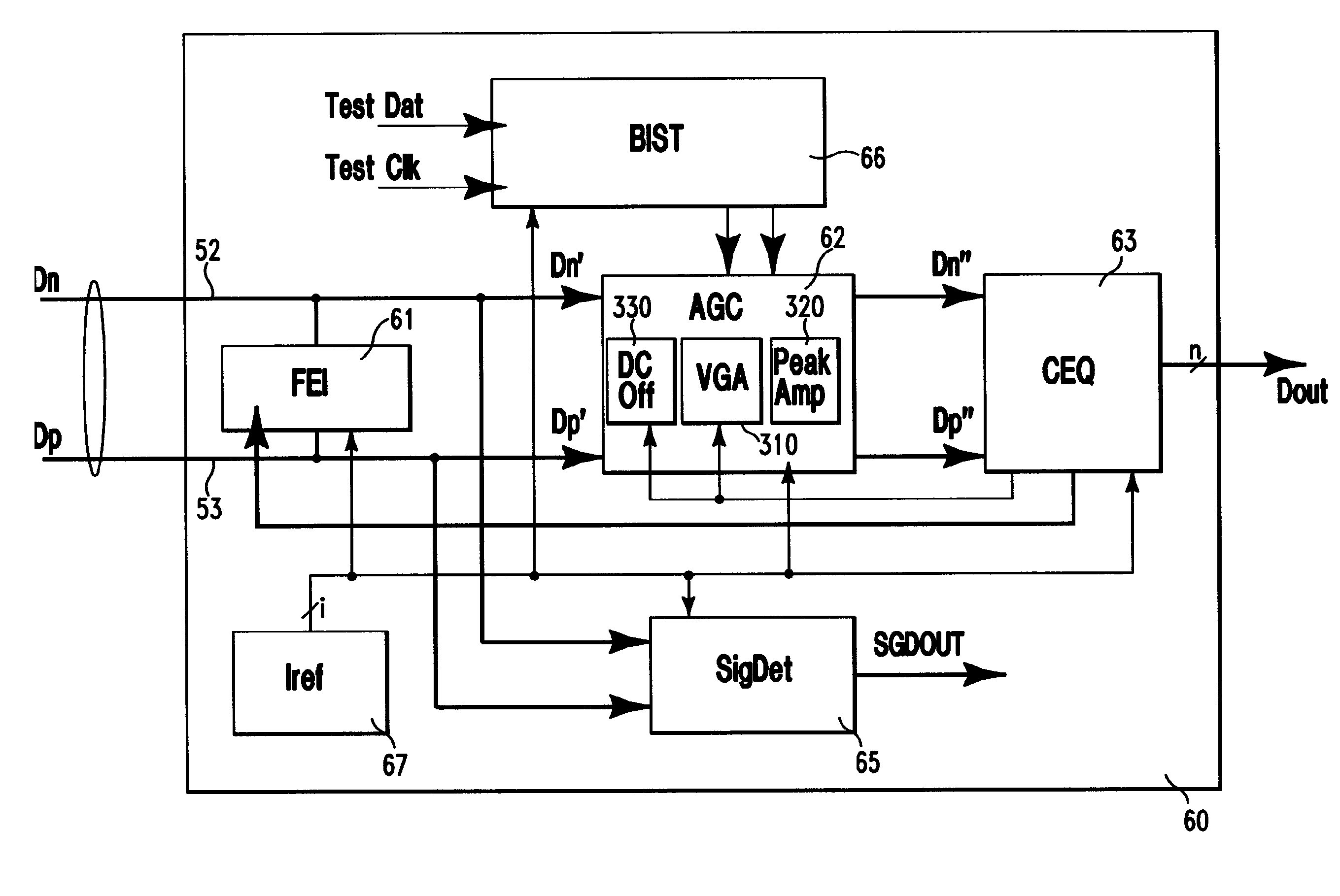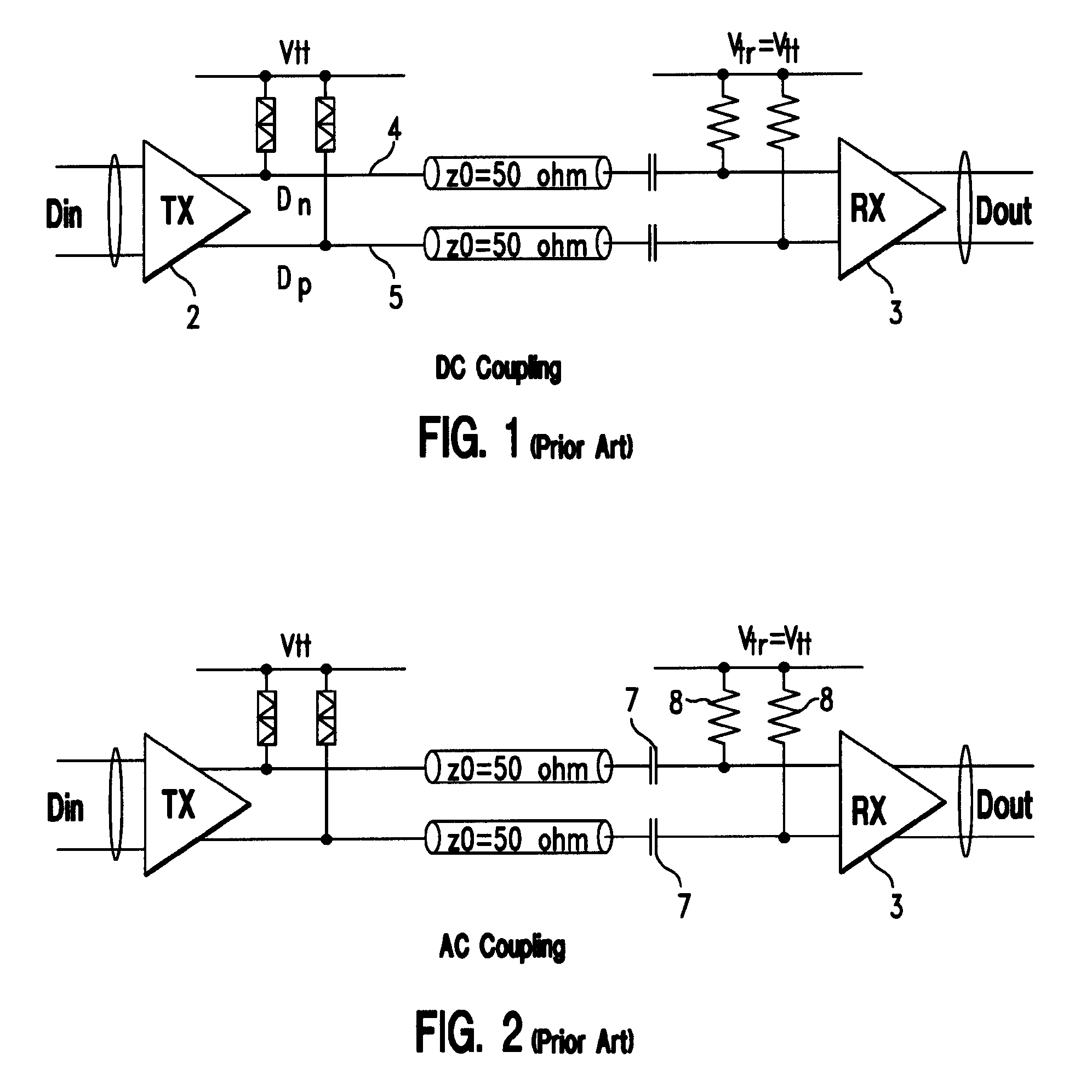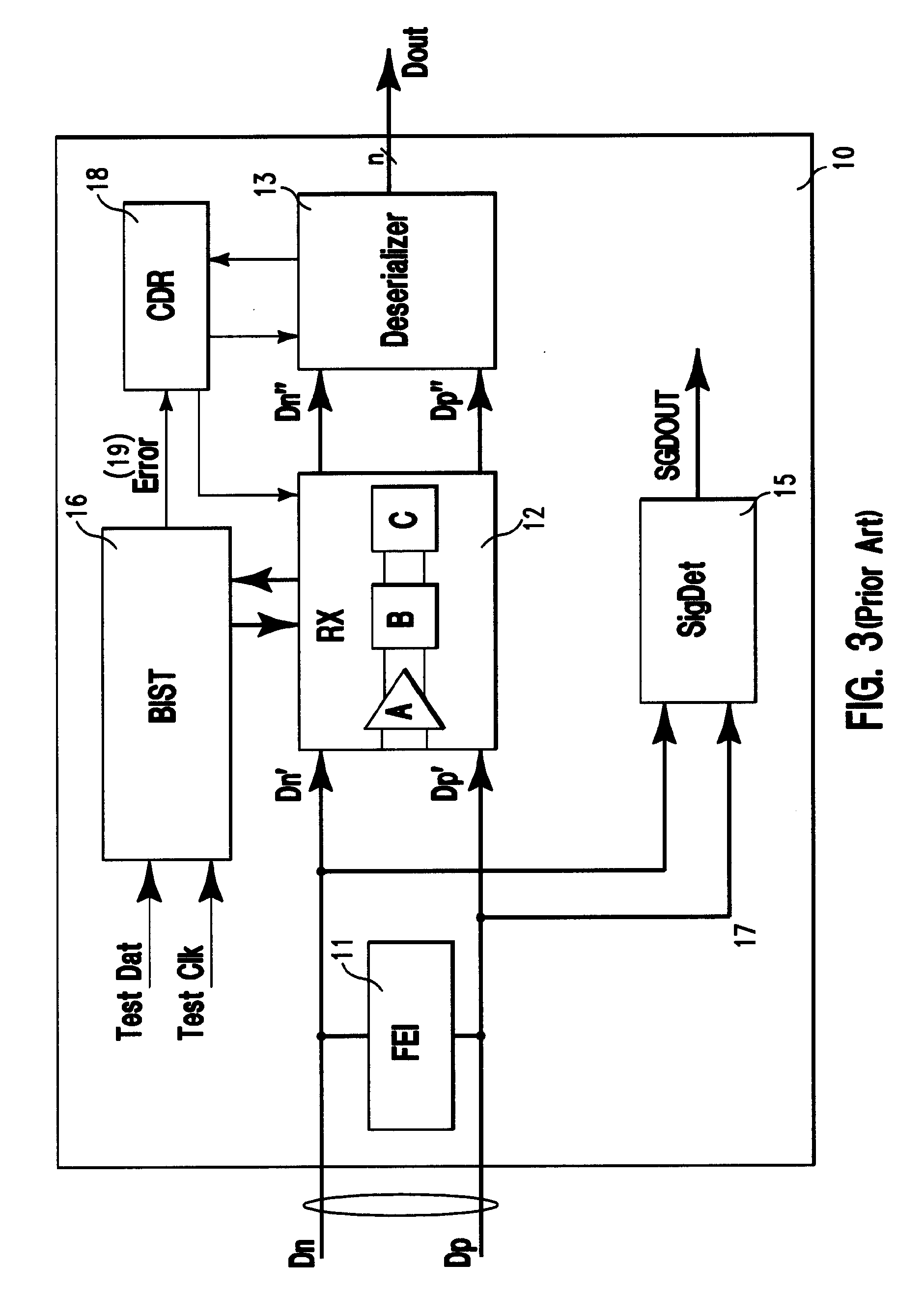High Speed Multi-Mode Receiver
a multi-mode receiver and high-speed technology, applied in the field of data receivers, can solve the problems of insufficient approach for higher transmission rate systems, unreliable wired communications, and obstacles to using fixed-coefficient ffe at transmission rates above about 6 gbs
- Summary
- Abstract
- Description
- Claims
- Application Information
AI Technical Summary
Benefits of technology
Problems solved by technology
Method used
Image
Examples
Embodiment Construction
[0031] Accordingly, in the embodiments of the invention described herein, a robust wire communication system is provided in which tap coefficients of a DFE in the receiver at one end of a transmission channel is updated during normal data transmission operation. In addition, tap coefficients of an FFE at the transmitter at another end of the transmission channel are updated by feedback from the receiver. Such feedback is provided through the transmission channel itself, such as during a test mode. A receiver complex according to an embodiment of the invention includes a central equalization unit operable to generate equalization information for updating the tap coefficients of the DFE at the receiver complex and those of the FFE of the remote transmitter. In a further embodiment described herein, the receiver complex includes an up-channel communication device which transmits the coefficient updating information generated at the receiver complex to the FFE located at the transmitter...
PUM
 Login to View More
Login to View More Abstract
Description
Claims
Application Information
 Login to View More
Login to View More - R&D
- Intellectual Property
- Life Sciences
- Materials
- Tech Scout
- Unparalleled Data Quality
- Higher Quality Content
- 60% Fewer Hallucinations
Browse by: Latest US Patents, China's latest patents, Technical Efficacy Thesaurus, Application Domain, Technology Topic, Popular Technical Reports.
© 2025 PatSnap. All rights reserved.Legal|Privacy policy|Modern Slavery Act Transparency Statement|Sitemap|About US| Contact US: help@patsnap.com



